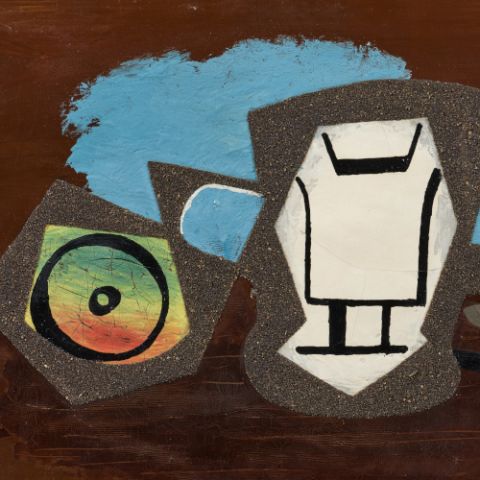
Lot 34 | Günther Förg | Untitled
1952 Füssen - 2013 Freiburg
Title: Untitled.
Date: 2004.
Technique: Acrylic on canvas.
Measurement: 195,5 x 165,5cm.
Notation: Signed and dated upper right: Förg 04.
The work is registered under the number WVF.04.B.0044 in the archive of the Estate Günther Förg.
We are grateful to Mr Michael Neff of the Estate Günther Förg for the kind confirmation of the authenticity of this work.
Provenance:
- Private collection Austria
Exhibitions:
- Kunsthalle Recklinghausen, 2004
Literature:
-Exhib. cat. Günther Förg. Make it new, Kunsthalle Recklinghausen, Recklinghausen 2004, p. 208, ill.
- The work bears witness to Förg's exploration of architecture and history, in which the relationship between surface and space plays a central role
- Work impresses with its size and the resulting spatiality and physical presence
- In 2023, the Long Museum in Shanghai dedicated the first extensive, institutional solo exhibition in Asia to the artist, underlining the international significance and recognition of his oeuvreparticularly pronounced gesture
Architecture to overcome the panel painting
The preoccupation with the wall surface can be understood as the starting point and central concern in Günther Förg's artistic work. During his time at the academy in Munich from 1973 to 1979, where he studied under Karl Fred Dahmen, he earned extra money as a house painter and recognized in this activity the artistic opportunity to go beyond the boundaries of the panel painting. Förg, who was internationally known and well-versed in a variety of media including painting, sculpture and photography, participated in the 1992 documenta IX and received the renowned Wolfgang Hahn Prize in 1996.
He used architecture and its constructive elements for his compositions, adopting structure and sequence as the design principles for his paintings. In these, geometric forms structure the picture surface and simultaneously open up the illusionistic space. Förg often starts with architectural photographs in order to capture the contours and volumes of the buildings and the dynamic interplay between the façade and the structure. The artist also explores this relationship between surface and space in his wall paintings, which, with 140 examples, form a central group of works within his oeuvre.
Moving color and clear line structure
The subject of the untitled work from 2004 initially appears to be clearly recognizable: a house facade, a window, a window in the window. A framework of black, right-angled lines divides the canvas into white and green fields, which at the same time seem to allude to the traditional components of a painting, the frame and the image field. A square, in which a smaller square is slightly off-center, occupies the center of the composition. In turn, a truncated rectangle is visible in this square, which, like an opening in the pictorial surface, provides a clear view of the plane of the background.
In contrast to the clear structure of verticals and horizontals, the precisely outlined areas are colored with a lively, painterly handwriting. In places, traces of the brush and the gesturally drawn paths break through the given linear boundaries: the sweeping painterly application is not subject to the precision of an architecture drawing made at the drawing board. Instead, the graphic elements of the spatial effect of the painting serve here.
In the complexity of the interaction between form and color, larger and smaller color areas interpenetrate each other in an exciting way; the structure is dissolved in pure abstraction. Through the network of lines and the resulting sections, perspectives shift, and the spatial impression becomes the significant subject of the painting. The impressive size of the painting alone creates a sense of space and physical presence. Successive staggered levels suggest a view into an imaginary depth, all the way to a fleeting, shimmering and thus almost impressionistic view of nature – of greenery.
The simulation of an architectural construction serves not so much to reproduce a place or an object, but to reveal the constructive principles of painting. Despite the suggestion of a concrete object - as here, for example, by the illusion of a window - Förg's painting is self-reflective.
Bettina Haiss.
Print this lot | Recommend lot |
Conditions of this Lot
32% buyer’s premium on the hammer price
Günther Förg Germany Abstraction Post-War Art Post War 2000s Abstract Painting Acrylic
More lots which could be of your interest
- Estimate: 6.000 - 8.000 €Starting price : 6.000 €0 Bid(s)12T 08h:37m:44sPrints & Multiples | ONLINE ONLY | Auction 06.10.2025
- Estimate: 6.000 - 8.000 €Starting price : 6.000 €0 Bid(s)12T 08h:38m:44sPrints & Multiples | ONLINE ONLY | Auction 06.10.2025
- Estimate: 400 - 600 €Starting price : 400 €0 Bid(s)12T 09h:10m:44sPrints & Multiples | ONLINE ONLY | Auction 06.10.2025









